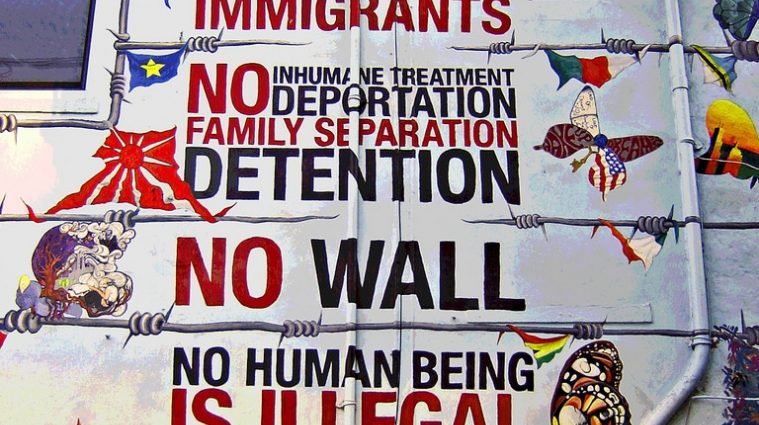Crimmi….what?
Although Schengen countries are facing a complex reality in the current era of globalization, migration and cross-border crimes, it is of vital importance to beware of the process of crimmigration: the merger of crime control and immigration control and hence the underlying assumption that criminals and migrants are interchangeable groups.
 Chicago Immigration Mural Photo Flickr CC by Mary Anne Enriquez
Chicago Immigration Mural Photo Flickr CC by Mary Anne EnriquezDespite the fact that crimmigration as a phenomenon is now studied within various disciplines - - political science, sociology, criminology, law, etc. - the concept originally aimed to shed light on the merging of criminal and immigration legal norms that have marked various legal regimes worldwide during the last two or three decades. In her ground-breaking 2006 article "The Crimmigration Crisis", Juliet Stumpf (Lewis & Clark Law School, Portland) also introduced the term crimmigration to denote the merger of immigration law and criminal law. As García Hernández explains, in its identity as a legal phenomenon, crimmigration law consists of three strands: The first being the fact that there is an expanded number of crimes that can lead to immigration problems. The second strand deals with the fact that there is the increasing amount of migration-related activity that can and does lead to criminal prosecution. And third, there are unique or uniquely harsh methods of regulating the lives of migrants that can not realistically be described as criminal law enforcement or civil immigration law enforcement techniques as we’ve traditionally understood those categories. Although García Hernández specifically speaks about the United States, various scholars from other countries have also identified these strands. Over the years, with the increased interest in crimmigration from other disciplines, we see a broadening up of the way in which crimmigration is defined and studies. As legislative changes does not evolve in a vacuum they cannot be fully understood without also studying the social and political context in which they take place. Part of studying crimmigration has therefore also become analyzing how issues relating to crime and immigration are perceived and framed in the social and political context as this can shed light on rationales underlying the legal dimension of crimmigration in specific contexts. To capture this broader scope, crimmigration is now also defined as the intertwinement of crime control and migration control.
In researching crimmigration, various authors have drawn attention to the increasingly harsh criminal penalties that the US Congress has authorized for immigration violations, to the growing category of criminal convictions for which non-citizens face discretionary or— more and more often—mandatory deportation, to the increasingly punitive feel of immigration proceedings, and to the expanding participation of state and local police agencies in immigration enforcement. The term has also provided scholars a sharp lens to see how criminal law has remained distinct and how it may not be wide enough to capture the social and political processes necessary for migration control. As Katja Franko (2014) argues, these new forms of ‘bordered penality’ follow a different logic: rather than subject migrants to over-enforcement within the same system or prepare them for re-entry, a parallel system is emerging that separates, segregates, and ultimately banishes non-members from. Although scholars provide different explanations for the crimmigration trend, they are unanimous in concluding that it creates an ever-expanding population of outsiders, turning migrants into criminals without the protection that citizens should enjoy. The notion of borders is frequently discussed in the crimmigration literature. Scholars have pointed out that the merging field of crimmigration control functions as a clear gatekeeper in terms of membership and access. On the one hand, this has resulted in borders seen as ‘being everywhere’ and a wide range of non-traditional social control agents becoming pulled into tasks of sorting out who belongs to a certain society and who does not. On the other hand, physical borders seem to become again viewed as major tools of exclusion “(…) that can be strengthened and fostered to protect a community and a society against a phantasmic threat of otherness that tends to become flesh in the demonized and abject figure of a migrant or refugee” (Rajaram and Grundy-Warr 2007). At the border, a distinction is made between ‘bona fide’ global citizens and ‘crimmigrant others’.


